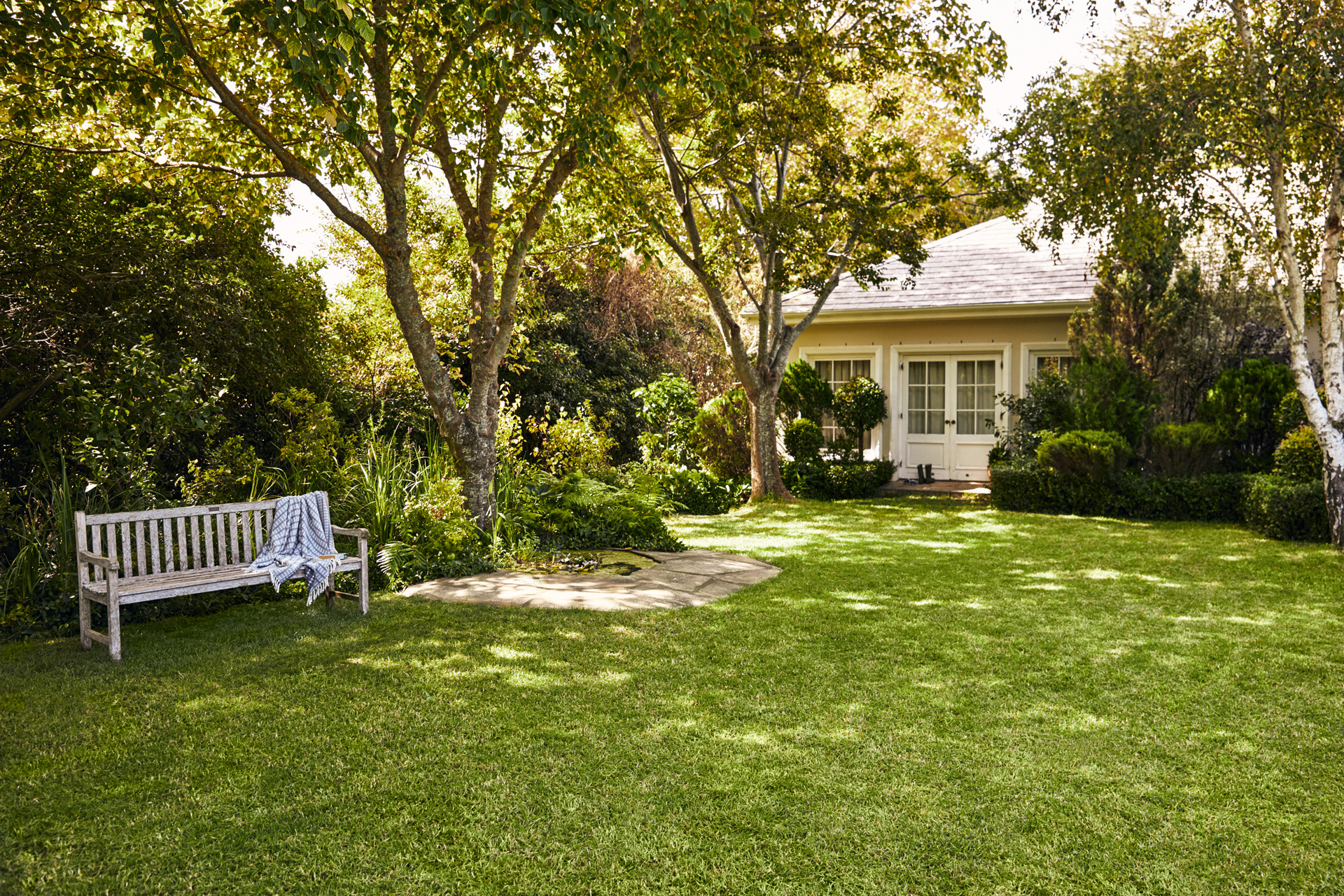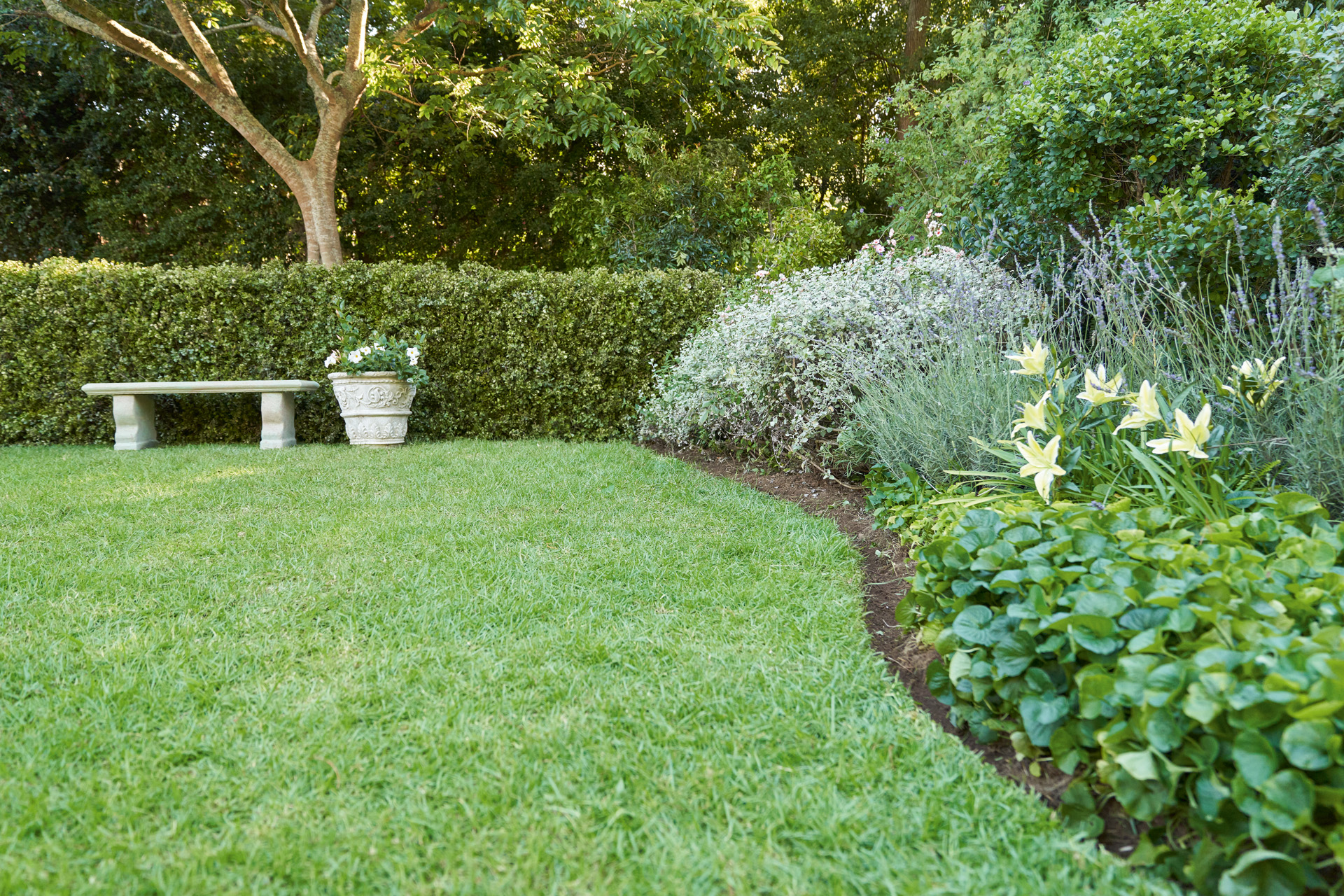DIY flowerbed edging: tips and inspiration
We will show you how easy it is to create your own flowerbed edging in your garden. Let us inspire you!
11.02.2025

Overview: DIY flowerbed edging
Flowerbed edging creates different zones in a garden and provides structure
Wood, stone or plants: there are a wide variety of options when it comes to creating your flowerbed edging.
If you would like to edge your flowerbed with a carpet of flowers, you should chose clump-forming plants.
If you would prefer to surround the bed with a hedge, germander is a good choice.
If you decide to create some stone flowerbed edging, it is important to cut a lawn edge
A lawn edge for flowerbed edging should be around 20 to 70 cm deep. The height is variable and depends how stable the foundation will be or what you are using to enclose the bed.
A flowerbed surround can be made from stone such as natural stone, paving stone, bricks, clinker bricks or fieldstone. You can also make garden bed edging from wood such as logs, wooden planks, tree trunks, willow or bamboo, or you can opt to make a border using eye-catching plants that give off an appealing scent.
Garden edging provides structure
Enclosing a flowerbed is not just a decorative exercise: it visually distinguishes between the different areas of the garden and allows for accurate division. For example, adding a garden border will separate a vegetable patch or a perennial bed from the rest of the lawn and prevent roots from growing out of control.
If you want to structure individual zones in an appealing, practical, natural or artistic way, you can do so simply with garden border edging that suits your taste and ideas. We’ll show you how.
Garden bed edging: options and materials
So what are your options when it comes to making your own flowerbed edging?
While you will use the flowerbed surround to consciously create boundaries in your garden, there should be no boundaries to your imagination in making it. Would you like to make your garden bed edging from stone, such as natural stone, paving stone, bricks, clinker bricks or fieldstone? Or would you prefer to use wood, e.g. logs, wooden planks, tree trunks, willow or bamboo? Perhaps you’d like a garden border made from attractive plants that smell great?
Your decision will depend on a great many different factors. The following questions will help guide your choice:
- How much time and money are you willing to invest?
How is your garden laid out?
If you are going to make the flowerbed edging yourself, will it be more decorative or more functional in nature?
Should your flowerbed edging be eye-catching or should it create structure without drawing attention to itself?
Ultimately, it’s all about the bigger picture: do the different materials blend well with one another and do they contribute to a harmonious overall appearance for your garden?
Ideas and inspirations for creating your flowerbed surround
Whatever kind of garden bed edging you decide on, good preparation is essential.
First measure the space in your garden, make a rough sketch and mark out the flowerbed boundary on it. Then you can draw out the shape of the desired flowerbed edging in the garden using a garden hose or some twine. This will give you a good idea of the necessary lawn edge shape so you can begin edging off the grass immediately.
Wooden stake garden border

Wooden stakes are a stylish option for creating a flowerbed edge. They are an excellent way of enclosing beds, even for the variety of designs available alone, and are also ideal for compensating for small differences in height at the edges of the bed or in the terrain. Naturally weather-resistant and particularly durable woods such as native oak or robinia, coniferous timber and pressure-treated wood are especially suitable for this purpose.
Douglas fir and larch are also a good choice for a flowerbed surround, but we always recommend using wood that is sourced using sustainable forestry.
Eco tip: use wood sourced within Europe to keep transport routes to a minimum. Additional PEFC or FSC certification also ensures that the wood is grown sustainably.
Short, pointed stakes that you can drive directly into the soil are adequate for a flowerbed surround; these should be driven into the soil to 30 to 50 percent of their total length.
You can shorten them using a handy power tool such as the STIHL MSA 160 cordless chainsaw. If the main purpose of your bed surround is to block roots from spreading, you should drive the stakes at least 60 cm into the soil.
It is best to use a heavy hammer to drive the stakes into the soil. However, please ensure you protect the head with a board or cover it with a protective sleeve as the wood will rot more quickly if the surface is damaged.
Naturally weather-resistant and particularly durable woods such as native oak or robinia, coniferous timber and pressure-treated wood are especially suitable for making flowerbed edging. Douglas fir and larch are also good choices.

Stone garden border edging
Eco tip: old bricks and clinkers have proven themselves to be sustainable materials suitable for a flowerbed surround.
First, create a foundation from sand and gravel so that the stones will lie straight and cannot sink – 20 centimetres plus the height of the stones along the edge is generally sufficient. This means they can be positioned better and ensures that no grass can grow into the bed.
When placing the stones on the foundation, make sure that the top of each stone is flush with its neighbours and that the front edges form a line. Finally, use a wooden block and a rubber mallet to adjust them to the correct height.

The transition from lawn to flowerbeds must be worked and any overgrowth dug out to ensure that no grass can grow into your bed from the outside.
It is especially important to cut a lawn edge when making stone flowerbed edging, as this will save you from cutting it out by hand and means you can mow conveniently along the edge.
Natural stone such as sandstone, limestone, granite, travertine or cast stone and old bricks and clinker bricks are all suitable for making bed edging.
With growing enthusiasm: Flowerbed edging made from plants

Plants that grow in clumps such as geraniums (crane’s bill), aubrieta, alyssum and stonecrop are all good choices for a flowerbed border if you prefer your garden to have a natural look . Carpets of flowers in bright colours will spread around your bed, exuding a bewitching scent.
Bushy lavender and scarlet wild thyme are good candidates for a bee-friendly garden. Both form an exquisite, lush carpet of flowers.

Or you might opt for a hedge to surround your flowerbed. Germander has established itself as a good alternative to the rather risky boxwood: it is drought-resistant, robust and evergreen.
Like boxwood, however, it does require regular shaping, which is best done in July.

You should always choose plants that suit the location (sun, partial shade or full shade). If your soil is too dense, you should use sand or gravel to thin it out.
Tip: If you want to grow a wider selection of kitchen herbs and vegetables, a raised bed could present a great alternative to the conventional vegetable patch. Find out here how to build and plant your own raised bed.
Bushy plants and herbs such as thyme, lavender, aubrieta, alyssum and stonecrop, as well as half shrubs such as germander and box are all suitable plants for creating a flowerbed surround.




